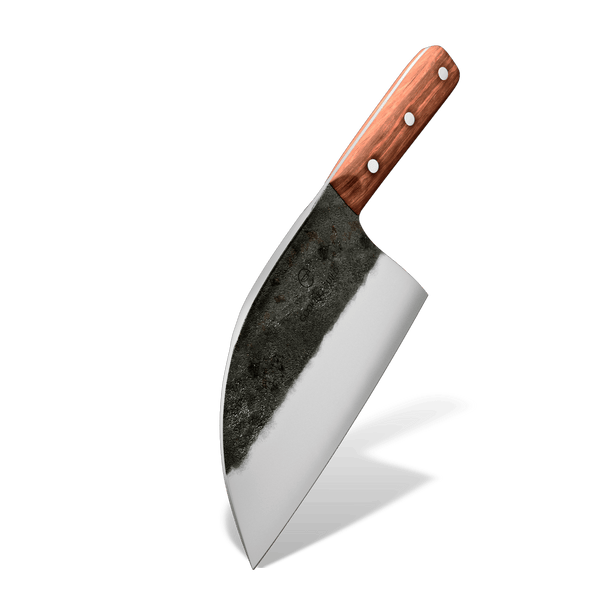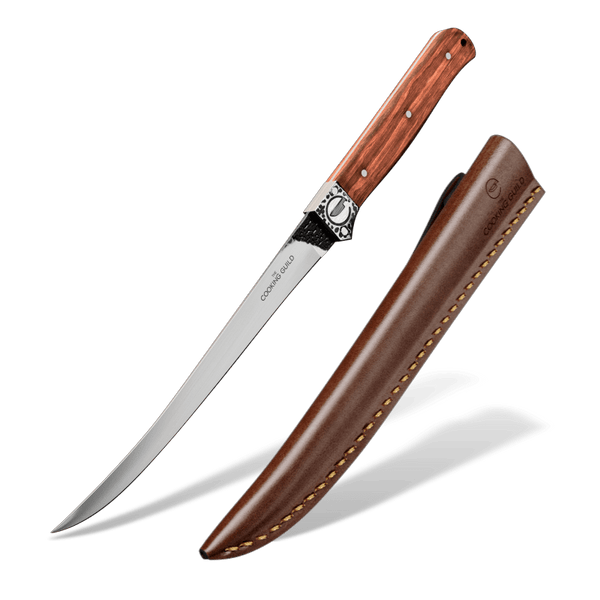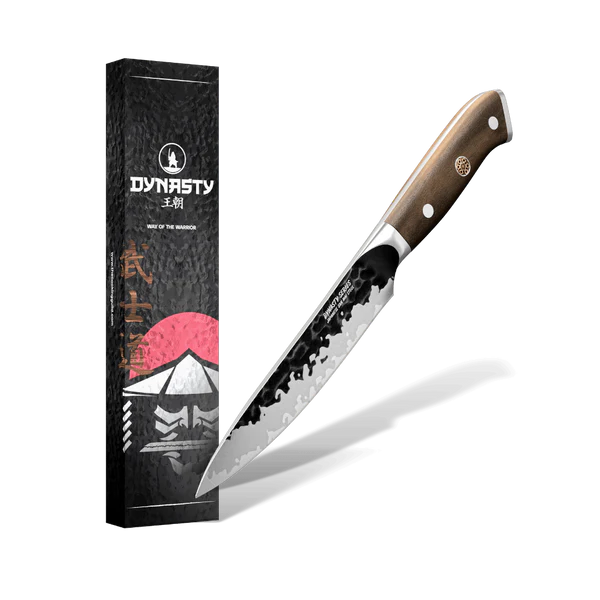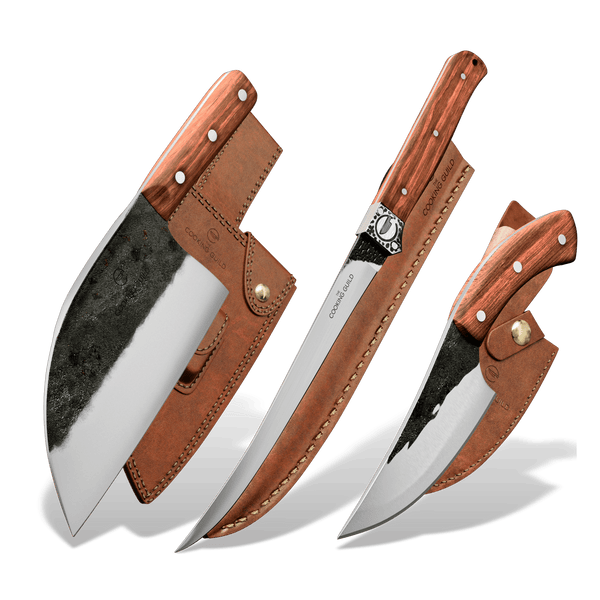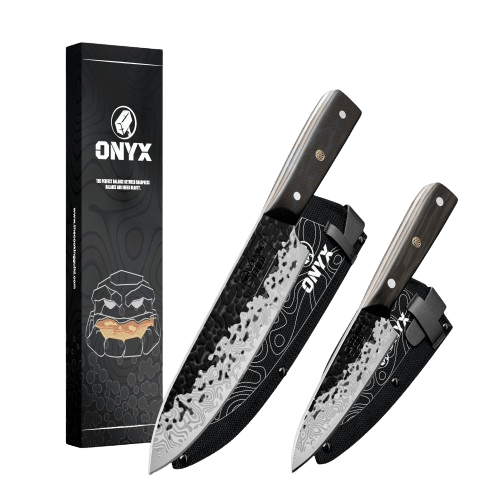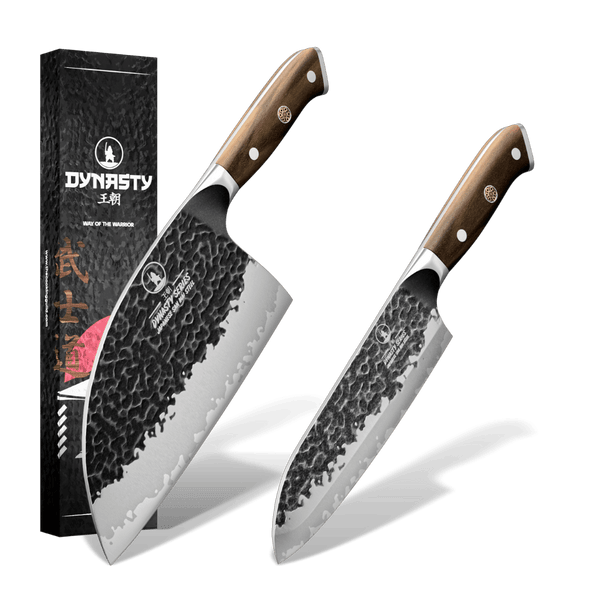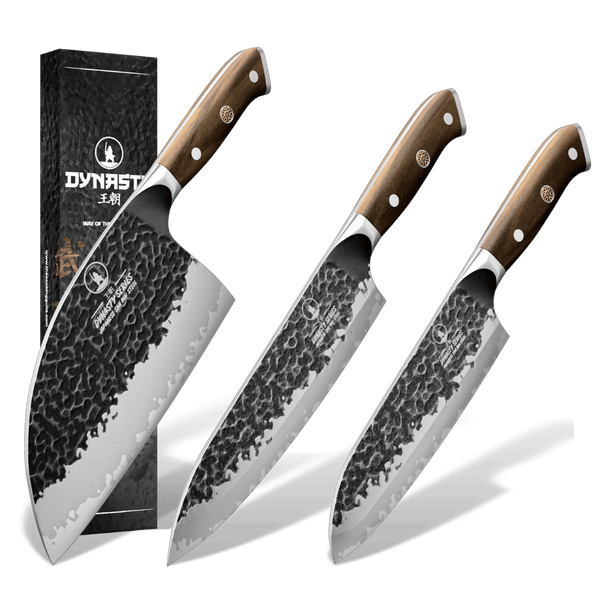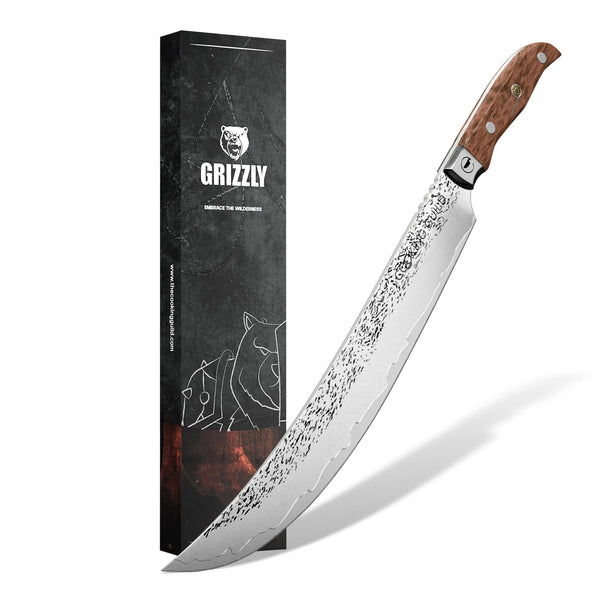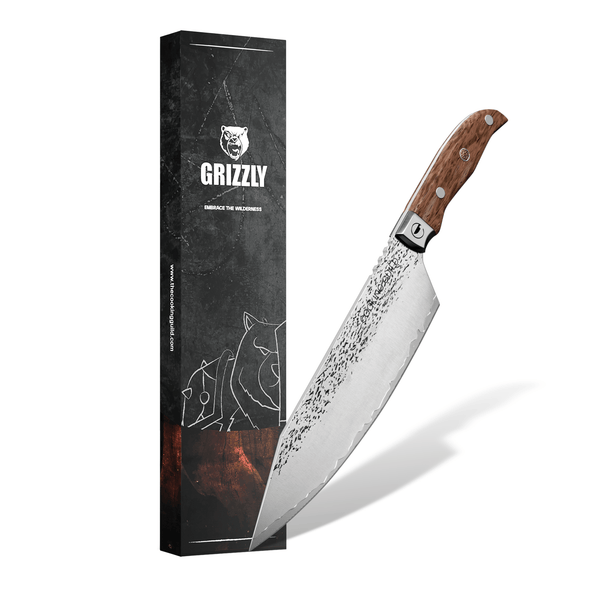Mastering the skill of butchering a chicken can elevate your culinary abilities, whether you're an aspiring chef or a home cook. This skill allows you to confidently and precisely turn a whole bird into cuts ready for delicious recipes.
So, ready your knife, wear your apron, and let's start learning how to butcher a chicken like a professional. Prepare to unlock your inner butcher and experience the satisfaction of skillfully handling poultry.
Preparation, Tools & Equipment You Need
Before starting, it's essential to prepare your workspace and have the necessary tools. Here's what you'll need:
-
Cutting Board: Pick a solid, spacious cutting board that allows room to work with the chicken and catch any juices or scraps.
-
Sharp Chef's Knife or Poultry Shears: Get a top-quality, sharp knife or poultry shears. A chef's knife is versatile, while poultry shears can make certain cuts easier. Make sure your tool is well-kept and sharp for accurate cuts.
-
Clean Work Surface: Ensure your workspace is thoroughly cleaned before starting. This is crucial to avoid cross-contamination and maintain food safety.
-
Bowl or Container: Have a bowl or container ready to collect giblets, whether you plan to use them or throw them away separately.
-
Paper Towels or Clean Cloth: Keep these nearby to clean surfaces, dry the chicken, or wash your hands throughout the process.
-
Optional: Apron and Gloves: An apron can protect your clothes from messes, and disposable gloves can add a layer of hygiene and safety.
Always remember to practice good sanitation to prevent foodborne illnesses. Wash your hands thoroughly before and after handling raw poultry, and keep all tools and surfaces clean.
With your workspace ready and the necessary tools at hand, you're set to start your journey into chicken butchery with enthusiasm and confidence!
Step-By-Step Guide To Butcher A Chicken
Butchering a chicken requires some skill and knowledge for a safe and efficient process. Here's a simple guide on how to do it:
Note: Always ensure to practice good sanitation and use clean tools to avoid contamination and foodborne illnesses.
-
Preparation: Clean and sanitize your workspace. Gather all the necessary tools and place a clean cutting board.
-
Secure the chicken: Put the whole chicken breast-side up on the cutting board.
-
Remove the feet and legs: Firmly hold the leg and cut between the leg and body. Bend the leg backward until the joint pops out and cut through it. Repeat this with the other leg.
-
Separate the wings: Hold the wing tip and cut where the wing meets the body. Apply pressure to the joint until it pops out and then cut through it. Do the same with the other wing.
-
Remove the backbone: Place the chicken breast meat side down. Starting from the tail end, cut along one side of the backbone until you reach the neck. Discard or save the backbone for making stock.
-
Split the chicken: Flip the chicken over so it's breast-side up. Press down on the breastbone to flatten it. Cut down the center of the chicken to split it in half. You can also quarter the chicken by cutting each half again.
-
Trim excess fat and remove giblets (optional): Trim any excess fat or skin as desired. You can also pull out the giblets from the cavity if you wish.
-
Rinse and dry the chicken: Rinse the chicken pieces under cold water to remove any blood or bone fragments. Pat them dry with paper towels or a clean cloth.
-
Store or cook the chicken: Store the chicken pieces in airtight containers or freezer bags in the fridge for a few days, or freeze them for longer storage. Alternatively, you can cook the chicken right away.
Remember, food safety and hygiene is crucial. If you're new to butchering chickens, consider getting guidance from an experienced butcher or refer to reliable sources for more tips and techniques.
Recommended Cooking Guild Tools You Can Use
1. Dynasty Series 8" Chef Knife

Immerse yourself in the art of cooking with our Dynasty Series 8" Chef Knife. Crafted with traditional Japanese techniques, this knife boasts a San Mai AUS-10 core with a 430 stainless steel exterior, resulting in a screamingly sharp, rust-resistant blade that's built to last. The perfect all-rounder, this chef knife is both durable and versatile. With a total length of 13.2" and a carbonized rosewood handle, it is designed for comfort and control. Elevate your culinary journey with this lifetime investment.
Pros:
- The Dynasty Series 8" Chef Knife is forged using traditional Japanese techniques, ensuring top-notch quality and craftsmanship.
- It features a high-quality San Mai AUS-10 core with a 430 stainless steel exterior, making it exceptionally sharp and rust-resistant.
- The full tang carbonized rosewood handle provides a comfortable grip and superior control.
- With its 8.1" blade, it offers versatility in the kitchen, making it suitable for various cutting tasks.
- It showcases an excellent balance of length, width, and thickness, promising precision with every cut.
Cons:
- The high-end materials and craftsmanship might make the Dynasty Series 8" Chef Knife more expensive than other options in the market.
- Its size and weight might not be suitable for those who prefer lighter or smaller knives.
2. Bushcraft Fillet Knife

Elevate your outdoor culinary experiences with the Bushcraft Fillet Knife, a remarkable addition to our Bushcraft Bundle. Crafted with a 7-inch 8Cr14Mov Stainless Steel blade, this knife is both strong and flexible, delivering precise cuts every time. Its ergonomic wooden handle ensures a comfortable and firm grip, while the reinforced leather sheath guarantees safe transport. Perfect for wild seafood adventures and precision cutting, the Bushcraft Fillet Knife is the formidable tool you need to tackle any culinary challenge in the great outdoors.
Pros:
- The Bushcraft Fillet Knife features a long, razor-sharp blade made from high-quality 8Cr14Mov Stainless Steel, ensuring strength and flexibility.
- With a blade hardness of 58HRC, it provides exceptional edge retention for prolonged use.
- The ergonomic wooden handle offers a comfortable and firm grip, facilitating precision cutting.
- It comes with a reinforced leather sheath for safe and easy transport, making it an ideal tool for outdoor adventures.
- At a total length of 12 inches, it's perfectly sized for handling a variety of cutting tasks.
Cons:
- The high-quality materials and craftsmanship may make the Bushcraft Fillet Knife more expensive than other options on the market.
- The 7-inch blade might be too long for those who prefer smaller fillet knives for more intricate tasks.
3. Nomad Series Fillet Knife

Experience the elegance of the wilderness in your kitchen with our Nomad Series Fillet Knife. This exceptional tool, perfect for filleting fish, boasts a razor-sharp blade forged from X70Cr17MoV stainless steel and adorned with an engraved mountain range on the blade edge. The knife's sleek shape enables a firm and comfortable grip on the handle, masterfully crafted from mountain burl wood and deep sea blue epoxy resin. Its long, corrosion-resistant blade ensures precision filleting, even on the most complex skeletons.
Pros:
- The Nomad Series Fillet Knife features a stunning X70Cr17MoV stainless steel blade, ensuring sharpness, strength, and durability.
- The blade is adorned with a unique mountain range engraving, adding a touch of nature-inspired beauty to your kitchen.
- The knife's handle, made from stabilized burl wood and deep sea epoxy, offers a firm and comfortable grip.
- The 17.8cm blade length is ideal for precision filleting, making it easy to navigate around bones and tight spaces.
- The superior corrosion and rust resistance of the blade extends its lifespan and maintains its performance.
Cons:
- None.
4. Dynasty Series Serbian Cleaver

Experience the power and precision of samurai craftsmanship with our Dynasty Series Serbian Cleaver. Forged using the traditional Japanese san mai technique, this kitchen marvel blends a hard AUS-10 high carbon stainless steel core with two layers of softer steel for superior sharpness, rust resistance, and longevity. The cleaver's broad, reinforced blade is razor-sharp and ideally balanced, offering effortless cut-through even on the toughest cuts. Completed with a sleek, full tang, carbonized rosewood handle and bespoke TCG pins, this cleaver is the perfect fusion of style and performance.
Pros:
- The Dynasty Serbian Cleaver is crafted using the traditional Japanese san mai technique, featuring a hard AUS-10 high carbon stainless steel core for exceptional sharpness.
- Its blade is clad with two layers of softer stainless steel, providing extra support, corrosion resistance, and ease of sharpening.
- The expansive, reinforced blade design is perfectly balanced, enabling it to glide easily through the toughest cuts.
- The full tang, carbonized rosewood handle ensures a comfortable grip and superior control.
- With its stylish TCG pins and sleek handle, the cleaver adds a touch of elegance to any kitchen.
Cons:
- None.
FAQ
1. How do you break down a raw chicken?
Breaking down a raw chicken involves cutting it into smaller, more manageable pieces suitable for cooking.
2. When is the best time to butcher a chicken?
Knowing when to butcher a chicken is crucial. Depending on the type of chicken (whether it's an egg-laying hen, locally raised chicken, or chickens from large scale farms), there are optimal times for slaughter. For instance, broilers or fryers are typically slaughtered when they reach a weight between 3 to 5 pounds. Cornish game hens are usually butchered at around 5 weeks of age, and roasters are slaughtered at 12 weeks or older.
